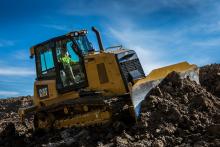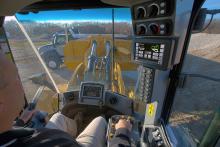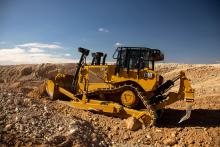Since the first D7E dozers were put to work on job sites in 2009,
With an innovative diesel-electric power train, the D7E is said to deliver up to 30% better fuel efficiency and 10% more production than its conventional D7R2 predecessor. Fuel savings, fewer mechanical parts to wear, reduced lubricant use and added production combine to lower owning and operating costs.
Three new productivity boosting dozing features are said to help optimise the machine during grade work. Stable Blade Control complements operator inputs and auto adjusts the blade for smoother, more precise grades. Traction Control senses track slip and makes instantaneous smart blade adjustments to improve load consistency and maintain fuller blade loads, resulting in greater productivity with less undercarriage wear. Finally, Slope Indicate provides a constant visual readout of the machine’s mainfall and cross slope for real-time grade and slope guidance without a dedicated grade control system.
The proven Cat emissions reduction technology is transparent, said to require no action from the operator and no stopping for system regeneration. The selective catalytic reduction system uses diesel exhaust fluid (DEF), which can be conveniently refilled at refuelling time. Across a variety of applications, the D7E typically has used DEF at a rate of 2 to 2.5% of fuel consumption.
The D7E has excellent fluid efficiency, defined as the amount of work done per unit of fuel and DEF consumed. In less aggressive applications, Cat claim that many operators will find they can complete multiple shifts on a single tank of DEF.








